Falling in Love with Bottom Whorl Supported Spindle
Words and photos by Cynthia Haney
I first fell in love with spinning yarn on a top whorl drop spindle, using park-and-draft to build my skills before spinning suspended. I manage the spindle with one hand while the other holds my fiber supply. After setting the spindle in motion, I move my spindle hand to my fiber hand. I pinch on my yarn where it ends, controlling the twist with both hands to keep it out of the fiber. I move my hands apart about a staple length, drafting. I slide my spindle hand smoothly on the drafted fiber as I release twist, forming yarn. This process ensures I am always holding yarn so the spindle does not fall. The spindle descends, drops, as I spin more yarn. I prefer this worsted drafting method, which makes a firm yarn. I enjoy spinning fiber prepared as top for smooth worsted yarn, maximizing any natural luster.
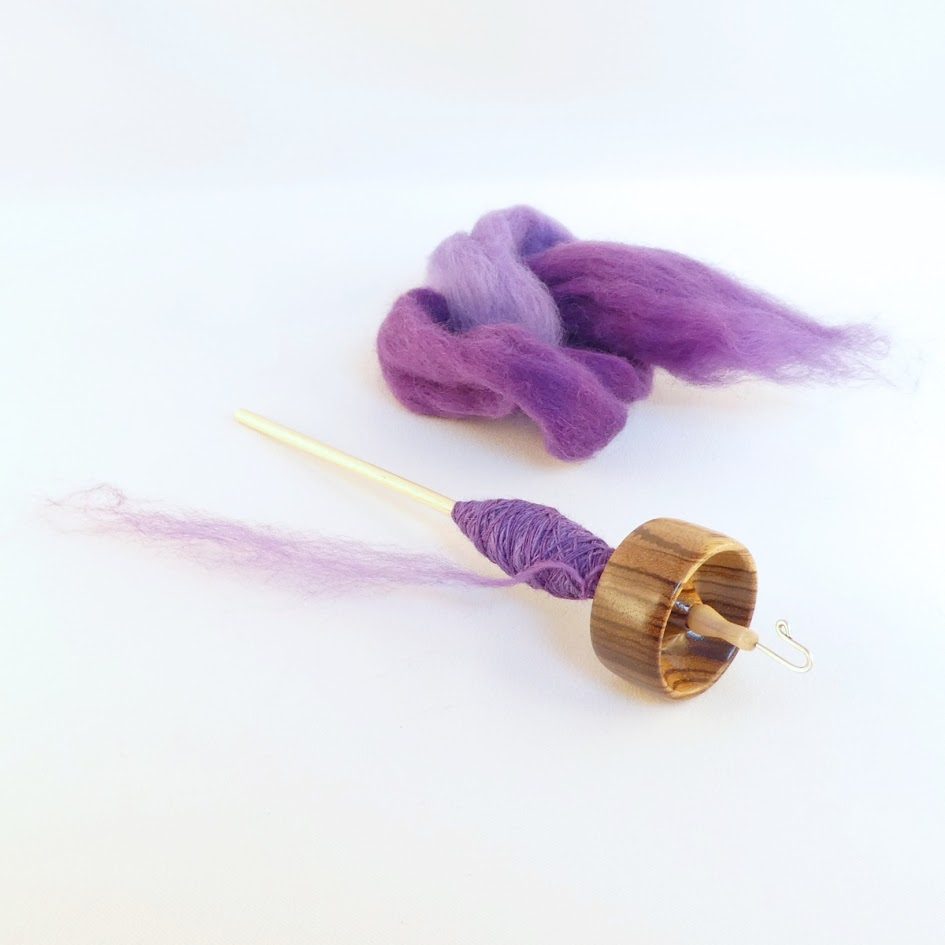
Recently, I tried spinning with a bottom whorl suspended spindle. The whorl crowded the shaft where I expected to put my spindle hand. When I wound onto the shaft, I needed a long yarn leader to reach the hook. Spinning suspended, I could make the same yarns using either spindle type, but the handling differences kept me from enjoying bottom whorl as much as top whorl.
Then I tried bottom whorl with the spindle supported by the shaft’s pointed bottom end. With this method, I flick on the shaft just below the hook with my spindle hand. I curl my fingers around the shaft, allowing the spinning spindle to lean on them. I must allow twist into my drafting without my spindle hand moving to pinch it off. I need a fiber preparation that will draft freely in the presence of twist – I know fiber prepared as top gets locked by twist, resisting drafting.
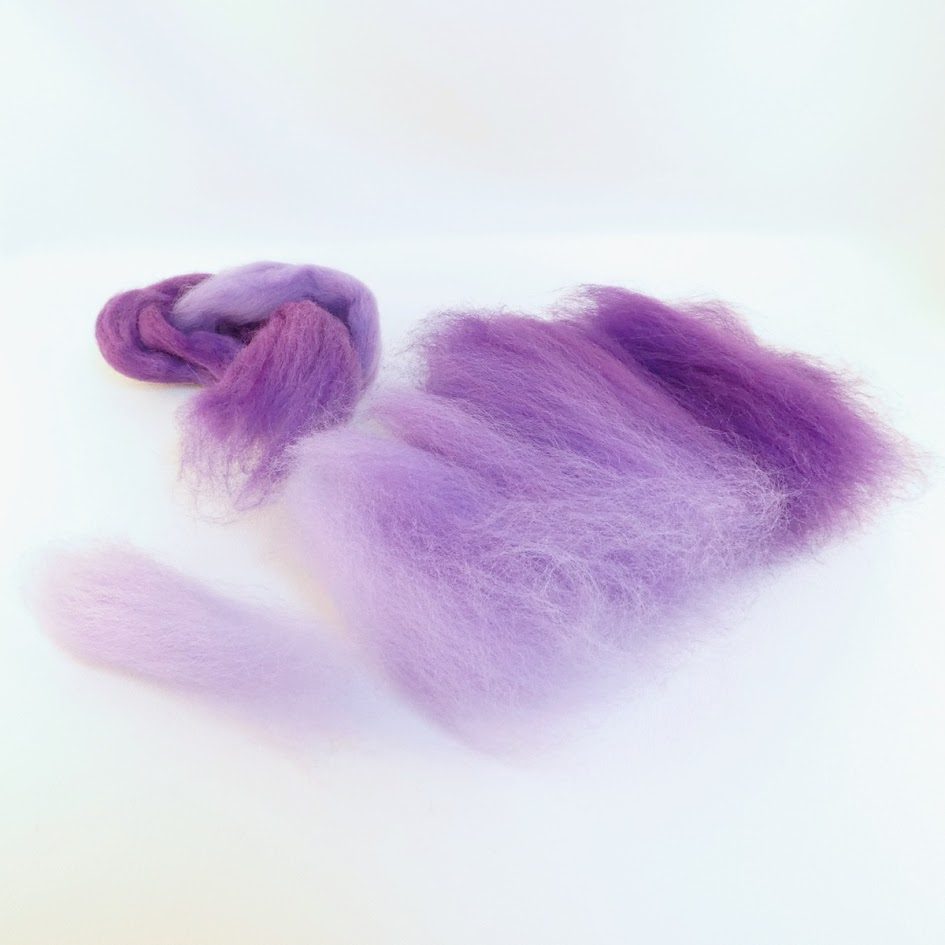
I pull a staple length of wool from prepared top and fold the staple over my fiber hand fingers. I catch the fold with the spindle’s hook. I spin the spindle, providing twist, and pull my fiber hand away from the spindle. Instead of constantly pinching off the twist, I let it flow. I draft using only the twist to grip the fibers, swinging my fiber hand farther away. When I am out of arm reach, I pinch my fiber hand to shut off the supply. I continue to flick my spindle, adding more twist until it locks the drafted fibers into yarn. I am ready to wind onto the spindle shaft. I release my yarn from the hook and start winding above the whorl. I spin the spindle supported as I tension and guide my yarn to shape the cop. I aim my remaining leader up the shaft, spiraling it to the hook.
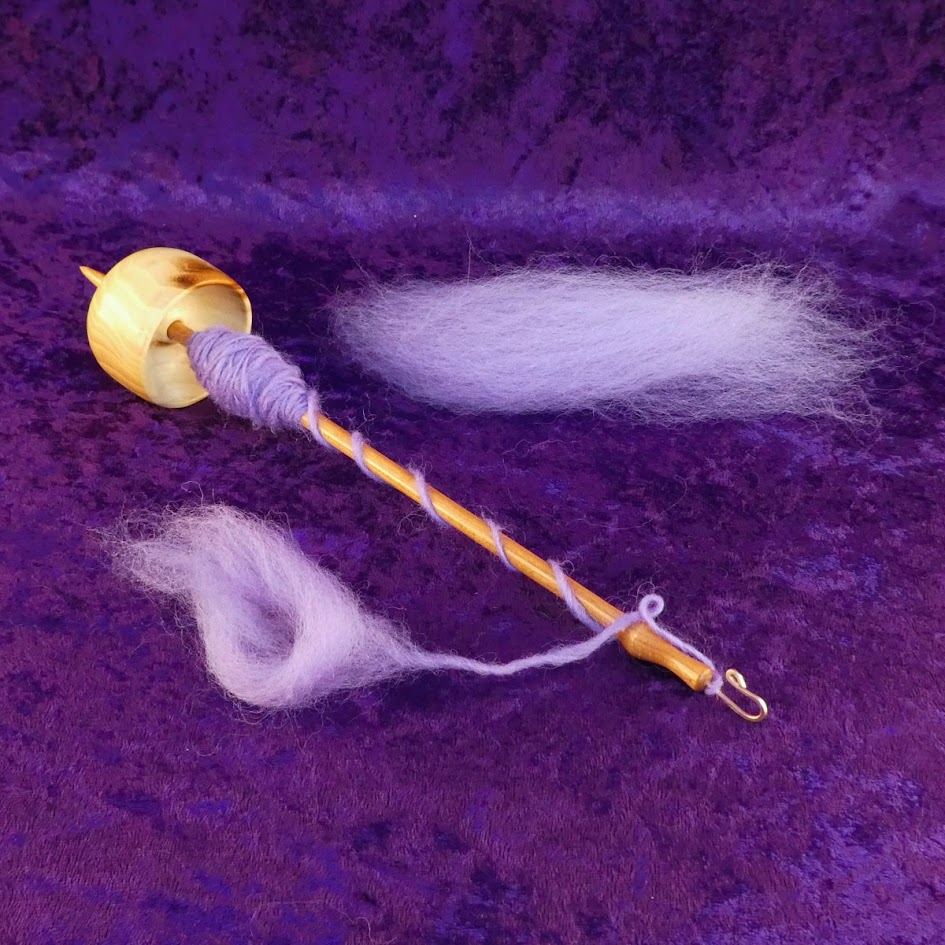
I spin an airy squishy yarn with a fuzzy matte appearance. I release control and embrace the rhythm of spinning while drafting against the twist. As I develop a steady pace my yarn becomes more uniform.
With my bottom whorl spindle supported on a bowl, the handling differences from top whorl become advantages. The low whorl position grounds the spindle nicely, freeing my yarn and drafting from the spindle’s weight. I draft long draw woolen supported instead of short draw suspended. I wind on faster with the spindle supported than when holding the shaft of a top whorl spindle. I spin roving, rolag, or batt preparations supported, keeping the woolen fuzziness soft. When I draft those preparations worsted, the fuzz on the firm yarn can feel prickly.
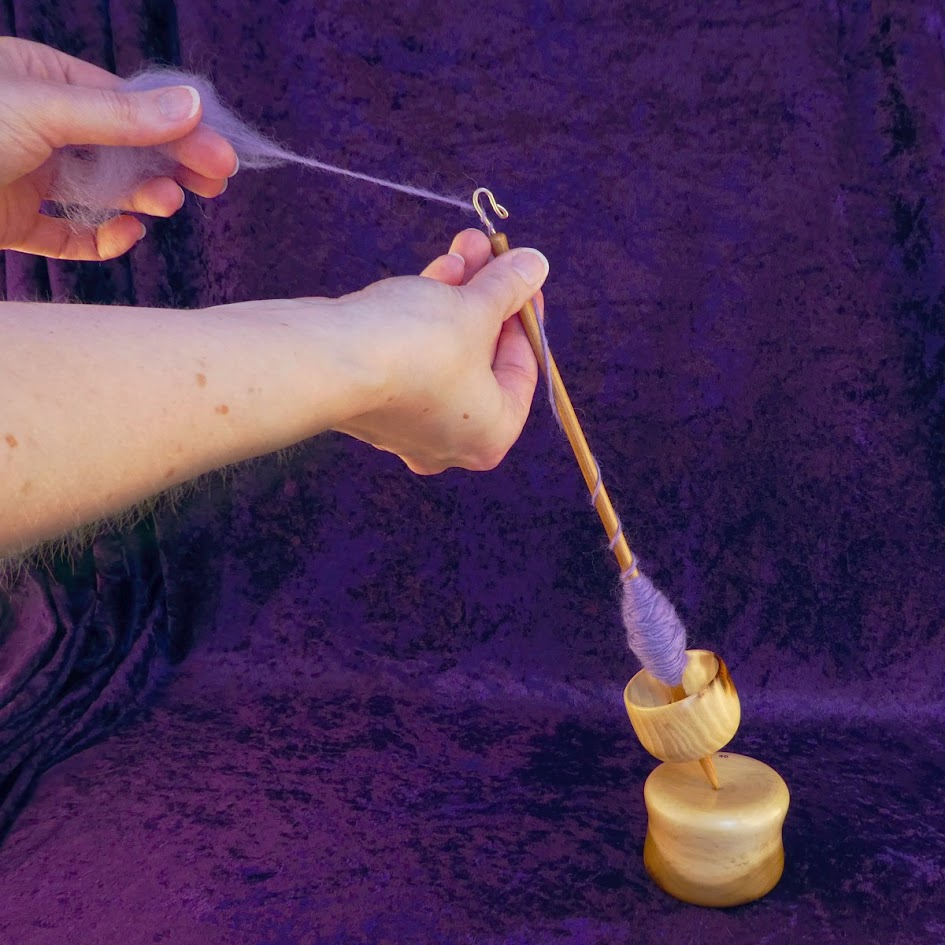
I decided to spin the same Romney wool top from alk&me fiber art studio into opposite yarns. With my top whorl spindle suspended, I took full advantage of the linear smooth worsted preparation. I drafted the Romney top worsted, spinning a dense, lustrous single. On my bottom whorl spindle supported, I transformed the top by taking staple lengths and folding the fibers in a U. I drafted long draw woolen to spin a squishy, fuzzy single.
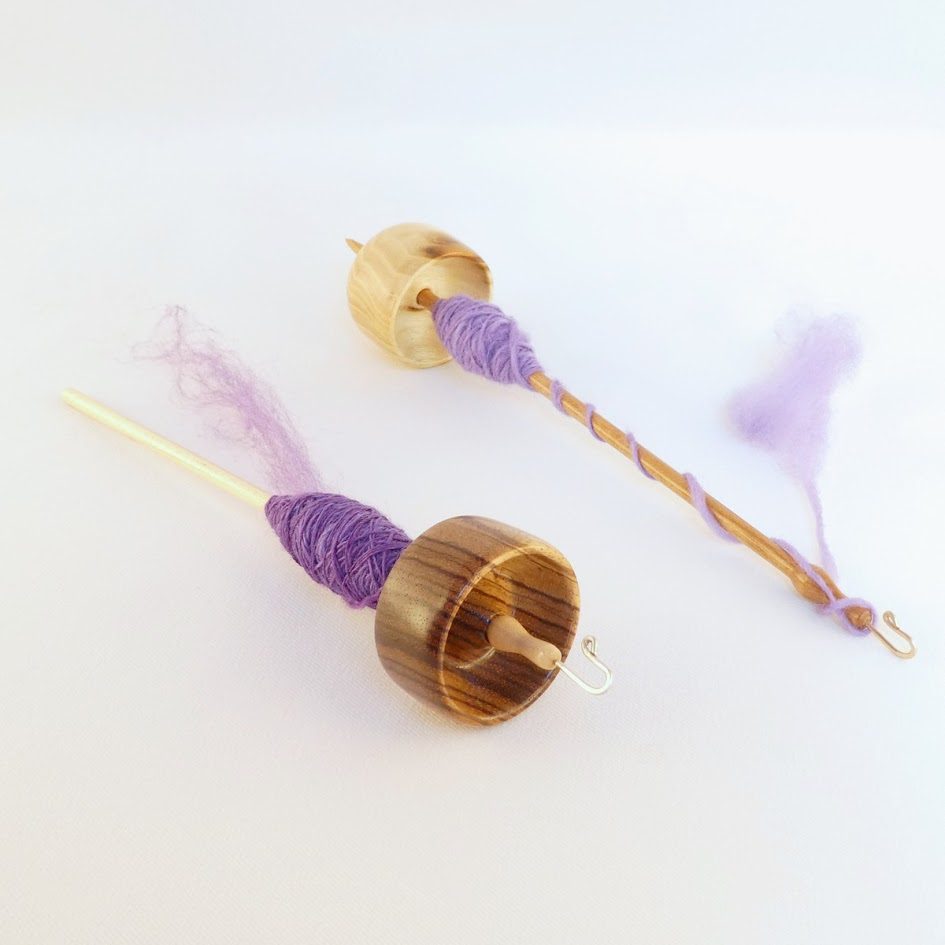
I finished each single into a 2-ply yarn. Using the worsted single, I plied suspended from the top whorl spindle. I fed the singles into the twist while smoothing them with my fingertips. Using the woolen single from the bottom whorl spindle, I plied supported on a larger bottom whorl spindle. I fed the singles into the twist, separated by my fingers. I provided resistance only to keep the rate even, maintaining the air in the singles.
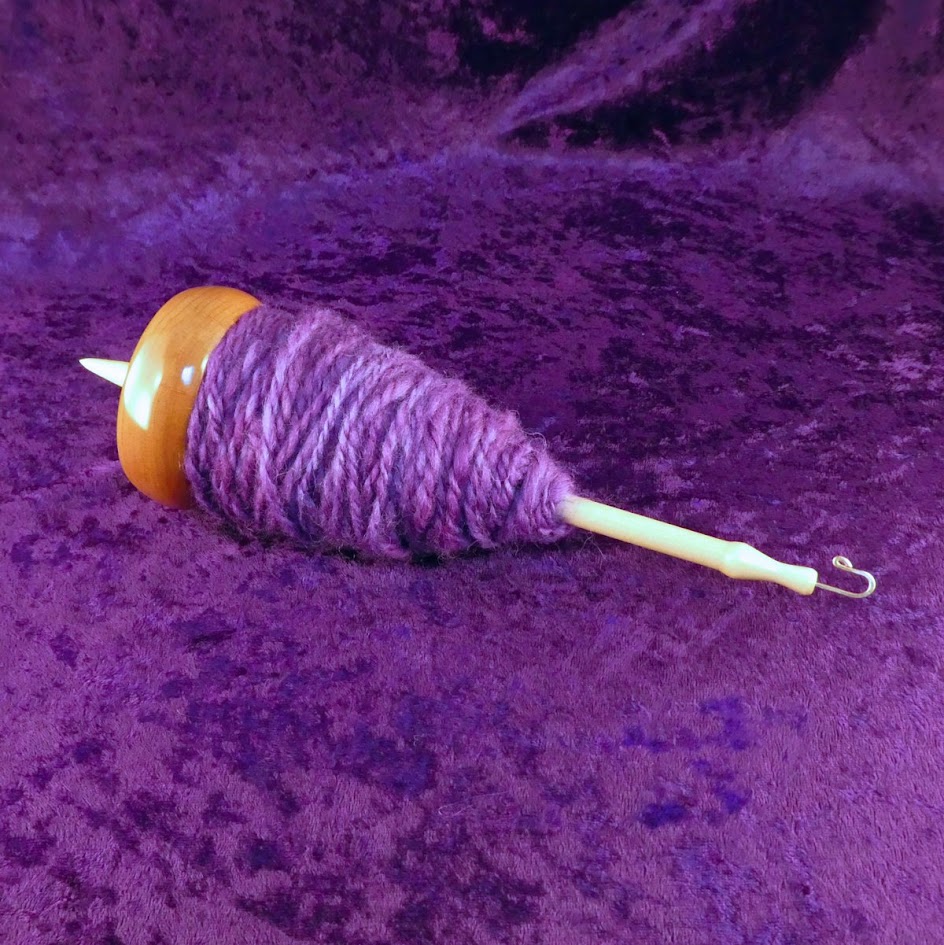
I washed both yarns in hot water with shampoo and rinsed them with cold water. I handled the worsted suspended-spun skein only to squeeze it out. I agitated the woolen support-spun skein in the wash. After rolling both skeins in a towel, I snapped them open with my hands to tidy up the yarn. I hung the skeins to dry under their own weight.

I noticed little change in the worsted suspended-spun skein (on the left). I found the support-spun woolen skein (on the right) improved with agitation. I like the halo it developed. The squishy, fuzzy yarn calls me to make a cozy project.
The totally different method of spinning supported inspires me. I love the easy flow of drafting with the twist acting like a mysterious force to form yarn without my intervention. Now I love spinning my bottom whorl spindles.

Virginia native Cynthia Dianne Haney is passionate about spinning yarn exclusively on spindles. She designs and turns spindles on the lathe, signing each with her interlocking monogram. Cynthia equips her spinning students with spindles that inspire practice. The Cynthia Wood Spinner woodshop and business is nestled in peaceful Nelson County.



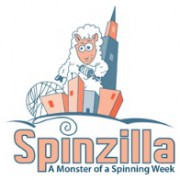
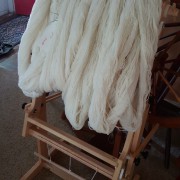
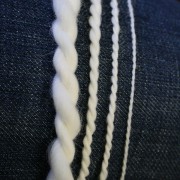
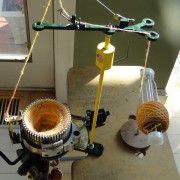

Leave a Reply
Want to join the discussion?Feel free to contribute!